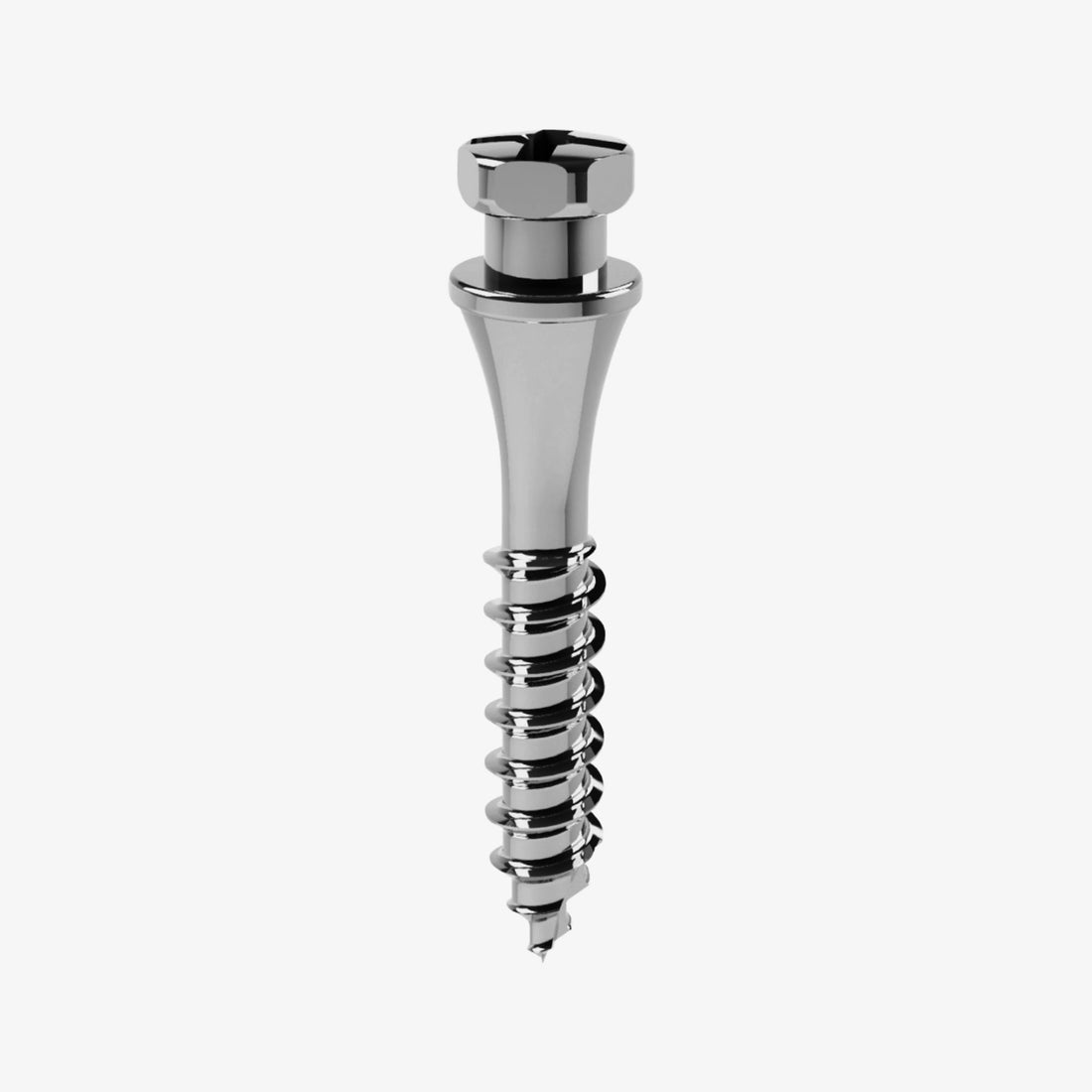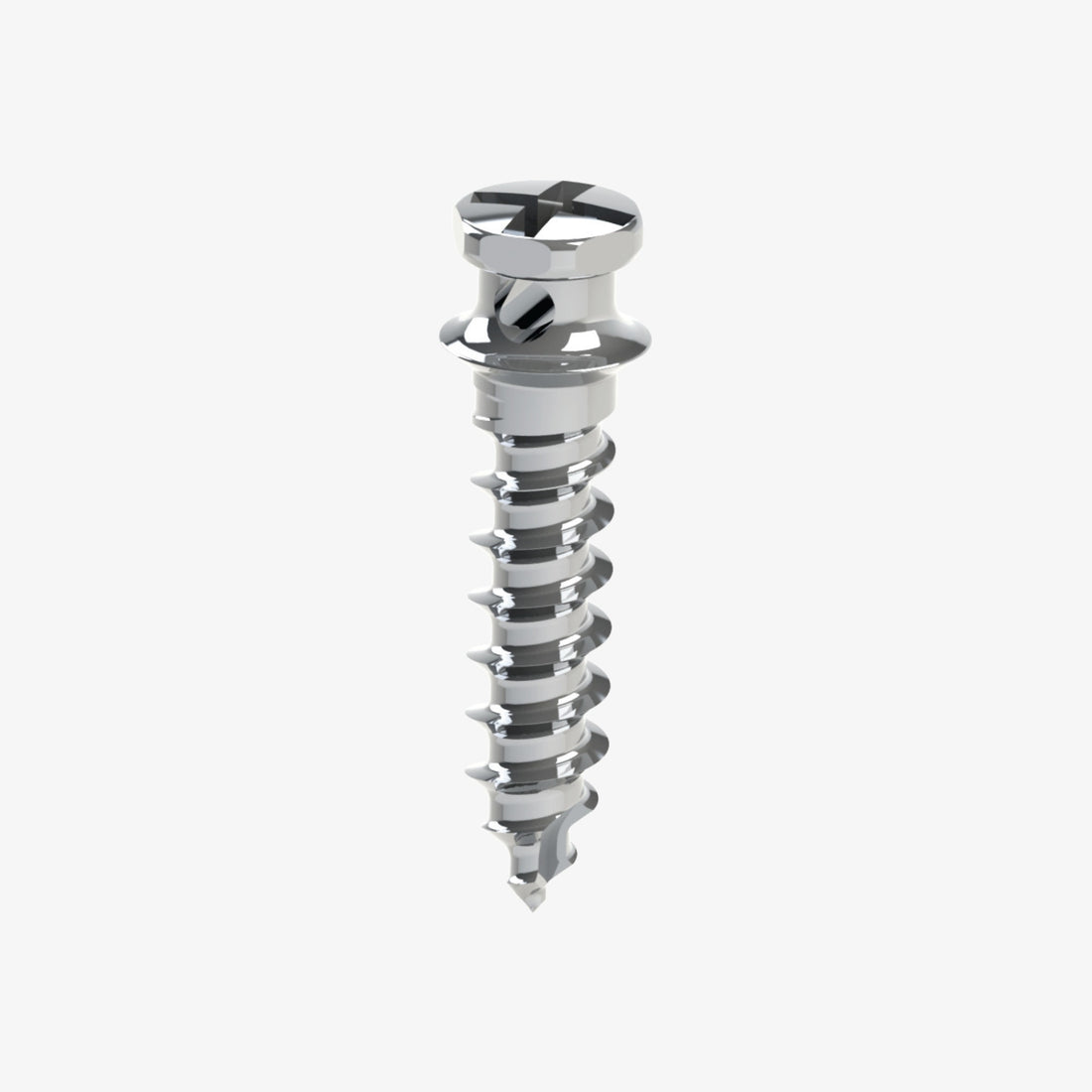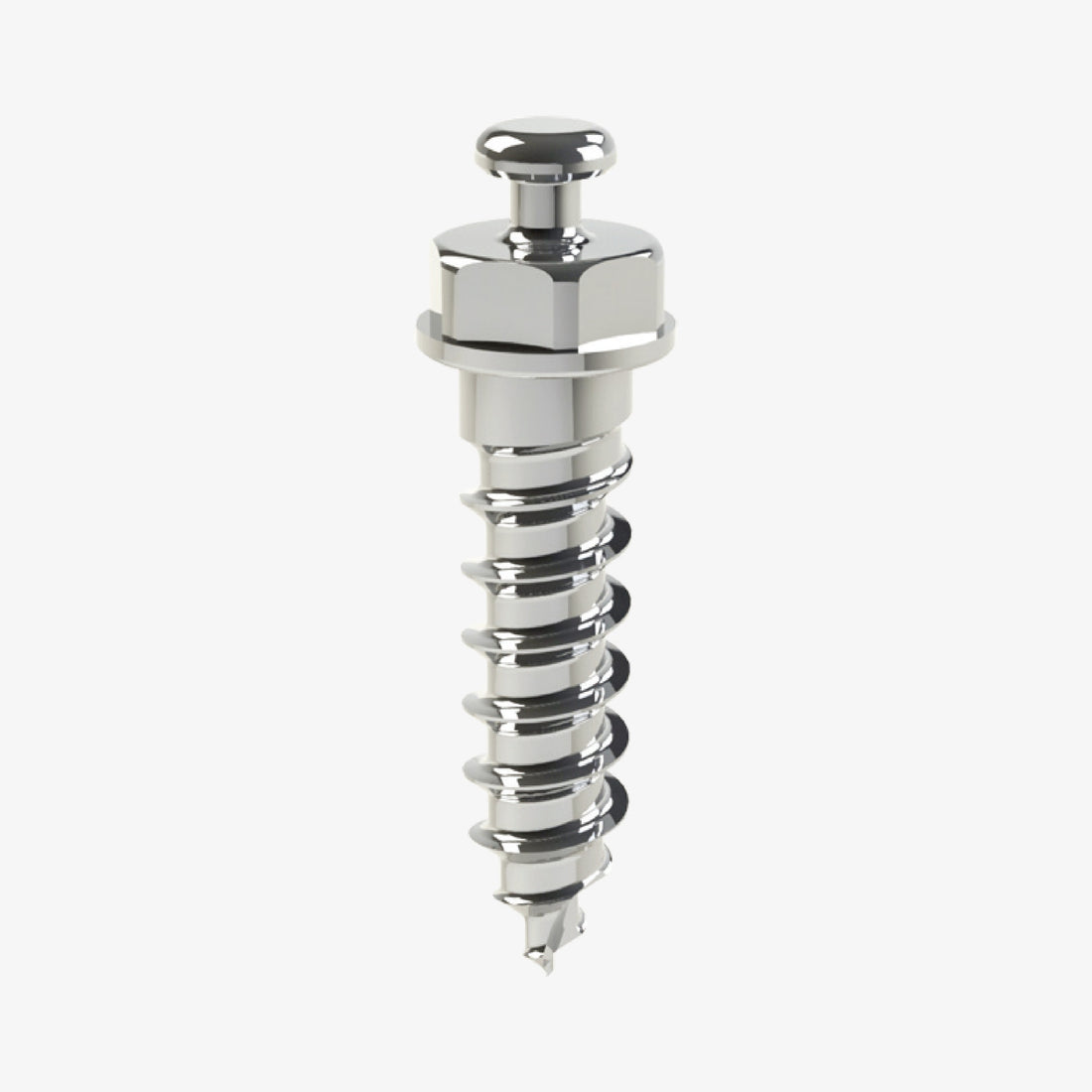Mini implants, or temporary anchorage devices (TADs), have become an indispensable tool in modern orthodontics, providing reliable and efficient solutions for anchorage. Their successful use depends not only on biomechanical planning but also on selecting the appropriate implant design for each clinical case. This article delves into the critical factors involved in choosing mini implants, focusing on their design elements and biological considerations, while offering practical insights to enhance clinical outcomes.
Understanding Mini Implant Design
Mini implants are composed of several distinct parts, each serving a specific purpose. These components include:
-
Head: The point of attachment for auxiliary devices such as elastomeric chains, springs, or archwires.
-
Collar/Neck: Designed to accommodate the thickness of the mucosa and minimize soft tissue irritation.
-
Core/Shaft: The threaded portion that integrates into the bone and provides stability.
Each of these elements comes in various designs, tailored to specific orthodontic applications. Below is a detailed exploration of these components and their clinical relevance.
The Head: Versatility in Design
The head of a mini implant is a critical component, influencing how auxiliary devices attach and function. Common head designs include:
-
Round Button Heads
-
Best suited for use with elastomeric chains and NiTi spring coils.
-
Their round shape allows for easy attachment and adjustment of ligatures.
-
Ideal for cases requiring flexibility and versatility in anchorage points.
-
Slotted Heads
-
Feature a rectangular or cross-type slot for engaging archwires, typically 19x25 gauge.
-
Useful for indirect anchorage systems where archwires must interface directly with the implant.
-
Customizable Heads
-
Some designs include features for specific clinical needs, such as hooks or multiple attachment points.
Practical Insight: Many practitioners prefer round button heads for their simplicity and adaptability. However, individual preferences and the clinical context play a significant role in choosing the optimal design. For instance, slotted heads are favored in cases requiring archwire integration for rigid control.
The Collar/Neck: Soft Tissue Considerations
The collar or neck of the mini implant interfaces with the mucosa, necessitating a design that minimizes irritation while providing a secure fit. Key considerations include:
-
Length and Thickness
-
Should correspond to the soft tissue thickness at the insertion site.
-
Improper sizing can lead to soft tissue irritation or instability.
-
Surface Finish
-
Smooth finishes are preferable to reduce the risk of inflammation.
-
Textured collars may promote better soft tissue integration but require meticulous placement and hygiene.
Clinical Tip: Accurate assessment of mucosal thickness using radiographs or clinical measurement tools ensures proper selection of the collar size.
The Core: Bone Integration and Stability
The core, or threaded shaft, anchors the implant within the bone. Key factors influencing its performance include:
-
Thread Design
-
Coarse threads are ideal for areas with softer bone to enhance primary stability.
-
Fine threads are better suited for denser bone regions, such as the mandible.
-
Length and Diameter
-
Must be chosen based on the available bone depth and quality.
-
Shorter implants may be sufficient for areas with limited bone, while longer implants provide added stability in regions with greater bone density.
-
Self-Drilling vs. Pre-Drilling
-
Self-drilling screws simplify placement in soft bone.
-
Pre-drilling is recommended in dense bone to reduce insertion torque and prevent fractures.
Pro Tip: Conducting a pre-treatment CBCT scan can help determine bone quality and guide the selection of an appropriate core design.
Biological Considerations
Understanding the biological interactions between the mini implant and surrounding tissues is vital for successful outcomes. Key considerations include:
Bone Quality and Density
Bone density varies significantly between patients and anatomical sites. For instance:
-
Maxilla: Generally less dense, requiring implants with coarser threads for enhanced stability.
-
Mandible: Denser bone calls for implants with finer threads and pre-drilling techniques.
Soft Tissue Health
-
Hygiene: Maintaining a clean interface between the implant collar and mucosa is essential to prevent inflammation and peri-implantitis.
-
Placement Depth: Ensuring that the implant collar sits flush with or slightly above the mucosa reduces the risk of soft tissue overgrowth.
Healing and Stability
-
Primary stability is achieved through mechanical retention upon placement.
-
Secondary stability depends on osseointegration, which is influenced by the implant’s material, surface properties, and the patient’s bone healing capacity.
Practical Tips for Choosing and Using Mini Implants
-
Start Simple: Beginners should start with versatile designs like round button heads before exploring specialized options.
-
Plan with Precision: Use diagnostic imaging to assess bone quality, soft tissue thickness, and anatomical constraints.
-
Master Placement Techniques: Practice on models or attend training sessions to refine insertion techniques.
-
Adapt and Innovate: Experiment with different designs to find what works best for your clinical style and patient population.
-
Prioritize Patient Comfort: Consider designs that minimize soft tissue irritation and simplify hygiene maintenance.
Conclusion
Choosing the right mini implant design is a blend of clinical judgment, technical expertise, and personal preference. By understanding the role of each implant component and tailoring the selection to individual cases, orthodontists can maximize the efficacy and efficiency of their treatments. With ongoing advancements in implant technology and design, practitioners have more tools than ever to achieve optimal patient outcomes.
Further Reading and Resources
-
Papadopoulos, M. A. (2008). Orthodontic Treatment with Miniscrew Implants. Wiley-Blackwell.
-
Baumgaertel, S., & Razavi, M. R. (2016). "Temporary Anchorage Devices in Orthodontics." American Journal of Orthodontics and Dentofacial Orthopedics.
-
Park, H. S., et al. (2001). "Clinical Applications of Mini-Screw Implants in Orthodontics." The Angle Orthodontist.
-
Melsen, B. (2005). Mini-Implants in Orthodontics: Innovative Anchorage Concepts. Quintessence Publishing.
-
Ludwig, B., et al. (2008). Mini-Implants in Orthodontics: Principles and Practice. Springer.
These resources provide deeper insights into the design, application, and biological considerations of mini implants in orthodontics.











 0745 100 497
0745 100 497


